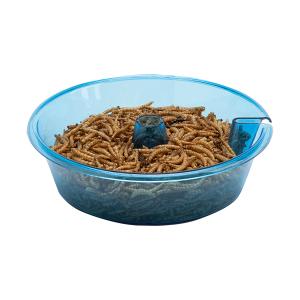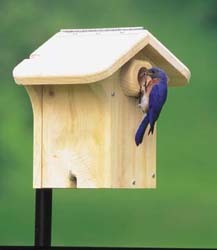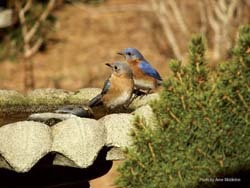How to Attract, Feed & House Bluebirds
Protection from predators and proximity to food and water are a bird’s primary consideration when choosing a nesting site. If bluebirds choose to nest in your yard, you can observe them as they build nests, lay eggs and feed their young. And when it’s time for the fledglings to leave the nest, they’ll likely learn to feed at your feeders and bathe in your bird baths.
|
|
Open Water
|
 |
Serve the Meal
|
 |
Open House x2
|
Learn about Suet HERE
Check our our Suet & Speciality Products HERE
Check out our Feeders HERE
To Order Please Visit Our Online Store


